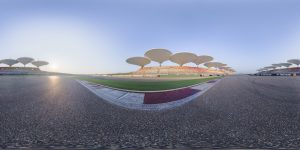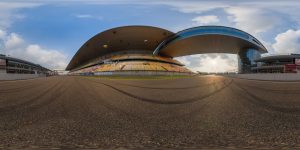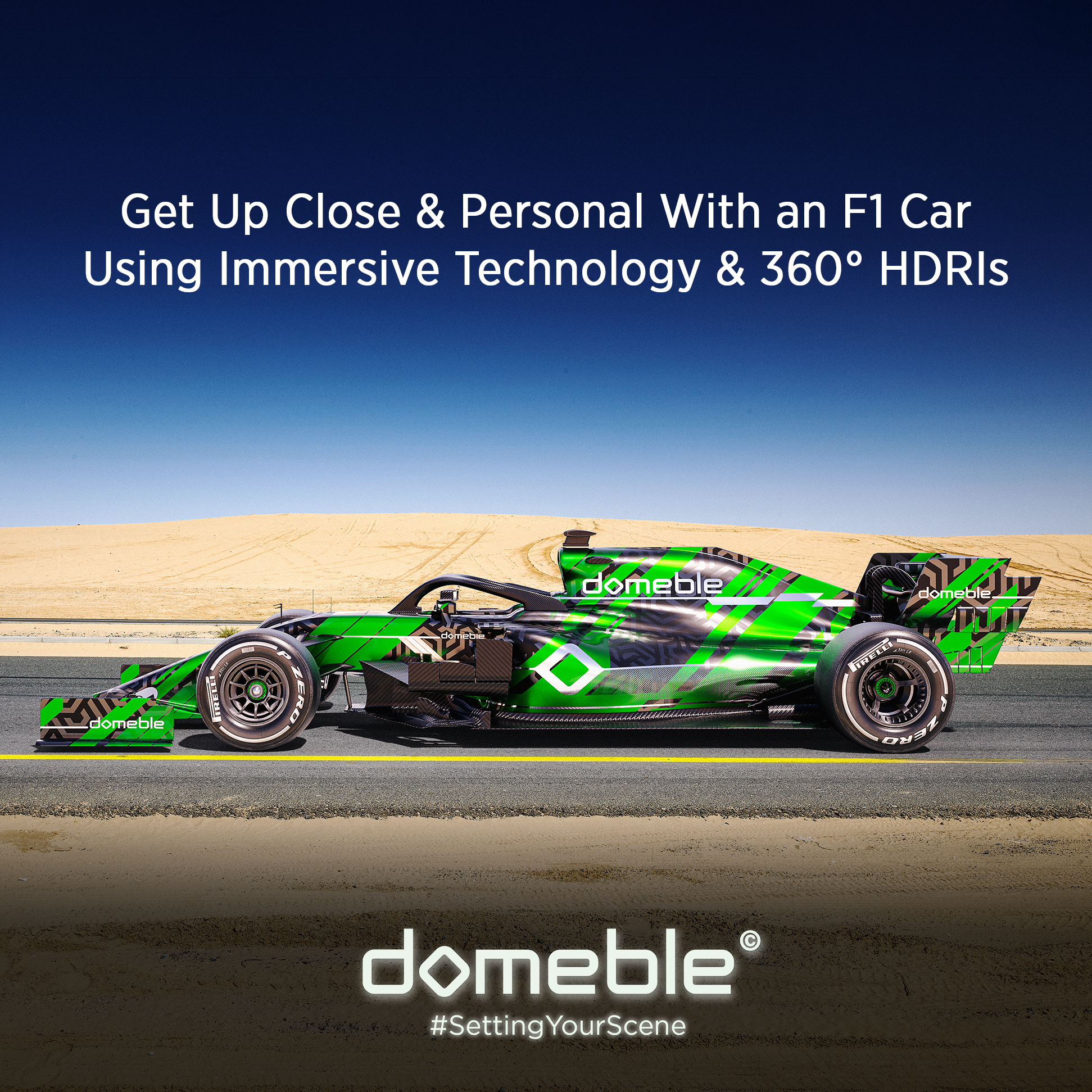As Formula One heads back into the deserts of Saudi Arabia this weekend, we thought it would be fun to highlight how our quality renowned 360° HDRIs are used to bring immersive VR scenarios to life and what value our immersive content brings to the F1 designers and marketeers.
F1 racing has always been at the forefront of technological innovation, and is often the foundation of technology that ultimately ends up as part of our domestic vehicles that get us from A to B. Every aspect of F1 design from aerodynamics to engine power, efficiency, performance and many more advanced technology developments, however in recent years, a new player has emerged in the world of F1 technology: immersive technologies.

Virtual reality (VR), augmented reality (AR), and other immersive technologies are increasingly being used by F1 teams to enhance their design and testing processes. These technologies offer a range of benefits that were previously impossible to achieve using traditional development methods, and they are rapidly changing the way that F1 cars are designed and built.
One of the most significant advantages of immersive technologies in any automotive design process is the ability to create highly realistic simulations. With VR, designers and engineers can benefit from virtual environments that accurately mimic real-world conditions, allowing them to test and refine their designs in a safe and controlled setting. For example, a team could use VR scene to simulate the airflow around a car and analyze the aerodynamics in great detail. They could also use VR to test different wing configurations and adjust the settings in real-time, allowing them to see the impact of their changes immediately. This kind of rapid iteration is essential in automotive design, where even the slightest adjustment can make a significant difference in performance, not to mention substantial financial savings throughout the development lifecycle.

So how do hi- res, dynamically wide, 360° HDRI’s from Domeble help this process?
As a supplier of immersive image content, and as specialists in photogrammetry and 360 hdri processes, our content brings extra dimensions of photo realism to the scene and opens up many more design review opportunities than have ever been available before. Our experience and knowledge of the automotive visualization space means we can bring an extra layer of immersion.
Domeble’s 360° HDRI’s are created using advanced techniques and equipment, such as HDR cameras and specialized rigs, which help to capture the lighting and reflections of the environment in high detail. These HDRI’s are then carefully processed and refined to create a high-quality image that accurately represents the lighting conditions of the real-world environment.
Using high-quality 360° HDRI’s from a specialist like Domeble can significantly enhance the realism and accuracy of the virtual environment that we capture. By using HDRI’s that are specifically designed to capture the lighting and reflections of automotive environments, F1 teams can create virtual environments that are almost indistinguishable from the real thing. This can help them to test and refine their designs in a more accurate and effective way, ultimately leading to better performance on the track. The high-quality 360° HDRI’s can also enhance the visual quality of the virtual environment, making it more engaging and immersive for the user. By capturing the lighting conditions of the environment in high detail, HDRI’s can help to create more realistic and believable shadows, reflections, and highlights in the virtual environment, which can enhance the overall visual quality and realism of the environment.
This photo real immersion brings several benefits for F1 designers and drivers to see the F1 car in VR in an immersive scene. It enhances their design output significantly in areas such as improved design visualization, were VR allows designers to view the F1 car in a photorealistic virtual environment, which can help them to visualize the design and make changes more effectively. This can lead to better design decisions, and ultimately, a better-performing car on the track.
The benefits Domeble’s 360° VR assets provide to F1 designers and drivers are many, and we’re always delighted to see how our content is used creatively to further the development of this exciting sport. Team Domeble will be watching the race unfold this weekend, and some of the team will be spending some downtime immersively exploring how good these majestic F1 machines look in our racetrack scenes.
Enjoy the race.
For more information about Domeble, visit our website.
[maxbutton id=”1″ ]











